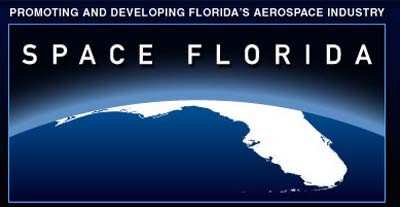Wed, May 16, 2012
Environmental Assessment Supports Expansion At Launch Complex 36B, Enables Joint FAA Launch Site Operators License For LC-36, LC-46
Space Florida will finalize an Environmental Assessment (EA) this summer that will enable the expansion of its two launch sites at Cape Canaveral Spaceport, Launch Complexes 36 and 46. The EA supports the expansion of LC-36 – specifically Pad B – to enable static test firing of all varieties and sizes of rocket motors and launch of university-developed or other small sounding rockets. It will also assist the Federal Aviation Administration (FAA) in approving both LC-36 and LC-46 for a joint Launch Site Operators License. The EA is being conducted by Florida-based RS&H, and was made possible by a Defense Infrastructure Grant allotted to Space Florida for this fiscal year.

“Adding launch and test stand capacities will provide an additional draw for companies looking at expanding their launch programs into Florida, or for Florida universities seeking a Cape launch capability,” said Space Florida Vice President of Spaceport Operations Mark Bontrager. “We have a number of launch providers that have shown a strong interest in having their own test stands and expanded facilities at our sites. Following this assessment, we can see those projects to fruition.”
Currently, Masten Space Systems is slated to utilize LC-36A in June for test launches of their liquid-fueled, small-lift reusable vehicles. The NASA Orion abort test booster and Lockheed Martin have both also publicly stated interest in utilizing LC-46 as a launch location. Additionally, the U.S. Air Force recently awarded Space Florida an IDIQ contract for LC-46.
Launch providers interested in utilizing pads on LC-36 or LC-46 could test or fly as soon as a year after requesting permission to employ these Space Florida facilities.
The EA being conducted will analyze environmental impacts associated with launch vehicles at LC-36 and LC-46 including:
- Athena-1 and Athena-2, Minotaur, Taurus, and other Castor® 120-based or Minuteman-derived booster vehicles; Peacekeeper-derived booster vehicles; and small sounding rocket launch vehicles;
- Liquid propellant medium class launch vehicles with a solid propellant second stage, and a bipropellant third stage;
- Vertical Take-off and Vertical Landing (VTVL) vehicles similar to Masten Space Systems’ G Class Launch Vehicle; and
- Orion Multi Purpose Crew Vehicle Ascent Abort test flights.
The EA will also include static testing of liquid, hybrid, and solid propellant motors of various sizes. It will analyze all propellant types including: RP-1, liquid oxygen (LOX), Isopropyl Alcohol (IPA), Ethanol, Nitrous Oxide, Hydroxyl-Terminated Polybutadiene (HTPB), hydrazine (N2H2) and nitrogen tetroxide (N2O4), Polybutadien Acrylonitrile (PBAN), Ammonium Perchlorate, and Aluminum.
More News
He Attempted To Restart The Engine Three Times. On The Third Restart Attempt, He Noticed That Flames Were Coming Out From The Right Wing Near The Fuel Cap Analysis: The pilot repor>[...]
Make Sure You NEVER Miss A New Story From Aero-News Network Do you ever feel like you never see posts from a certain person or page on Facebook or Instagram? Here’s how you c>[...]
From 2009 (YouTube Edition): Leading Air Show Performers Give Their Best Advice for Newcomers On December 6th through December 9th, the Paris Las Vegas Hotel hosted over 1,500 air >[...]
Aero Linx: NASA ASRS ASRS captures confidential reports, analyzes the resulting aviation safety data, and disseminates vital information to the aviation community. The ASRS is an i>[...]
“For our inaugural Pylon Racing Seminar in Roswell, we were thrilled to certify 60 pilots across our six closed-course pylon race classes. Not only did this year’s PRS >[...]
 NTSB Final Report: Rutan Long-EZ
NTSB Final Report: Rutan Long-EZ ANN FAQ: Turn On Post Notifications
ANN FAQ: Turn On Post Notifications Classic Aero-TV: ICAS Perspectives - Advice for New Air Show Performers
Classic Aero-TV: ICAS Perspectives - Advice for New Air Show Performers ANN's Daily Aero-Linx (06.28.25)
ANN's Daily Aero-Linx (06.28.25) Aero-News: Quote of the Day (06.28.25)
Aero-News: Quote of the Day (06.28.25)



